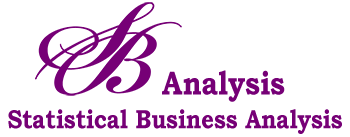(This topic is covered in detail in Journal Issues No. 02 and 03)
Business leaders and managers often base their decisions on uncertainties, for example:
- What is the likelihood that sales will decrease if we increase prices?
- What are the chances that each customer that comes into the store will make a purchase?
- What is the probability that a work-related injury will not occur in the 1st quarter of the year?
So what is probability?
Probability is the chance, likelihood, or possibility that a particular event will occur.
The benefits and uses of Probability in business
Businesses — big or small — often make important decisions subjectively based on hunch, instinct and experience. But with the increasing volume of data, tools and techniques, many organizations are moving towards data-driven decisions in the face of uncertainties. The key role of probability is to improve decision-making in the face of uncertainties. It helps decision-making become objective and data-driven rather than based on instinct, and thus, much more reliable, and accurate.
In Journal issues 2 and 3 we will show you many techniques for calculating the likelihood (probability) of various events occurring in your business. Below are a few examples without going into the grave details – the included Excel files will do the number crunching for you.
Example 1: Say the shipping department of a company analyzes it’s past 225 deliveries – the goal is to have the shipment arrive on-time, and without any damage to their product. At the conclusion of the analysis, the manager determined that 38 of the 225 shipments arrived late, 21 of the deliveries arrived damaged, and 9 of the shipments arrived late and were damaged upon arrival.
Question: What is the probability that any shipment will arrive late or damaged?
Conclusion: With this data in hand, and using a few probability tools, the manager can calculate the probability that a shipment will arrive either late or damaged at 22.2%.
Example 2: Many manufacturers of industrial products are concerned with tensile strength (the maximum stress a material or product can bear before breaking under tension, i.e., being pulled or stretched). A product of this sort would be wire rope – used in cranes, shipping and suspension bridges, to name a few.
After much testing, a manufacturer of wire rope determined that the average tensile strength of one inch diameter rope to be 104,500 (lbs.), with a standard deviation of 5,854.
Question: What is the probability that each spool of rope shipped, would have a breaking strength between 94,500 and 114,500 pounds.
Conclusion: With this data in hand, and using a few probability tools, the firm calculated the probability of this occurring at 91.28%
Example 3: Say an auto parts manufacturer had a piece of equipment with an average life expectancy of 12 years. The equipment was in its 7th year, and for capital budgeting purposes the firm wanted to determine the following probabilities:
The likelihood that the equipment would last more than 12 years?
The likelihood that the equipment would last less than 12 years?
The likelihood that the equipment would last between 9 and 11 years?
Conclusion: In order to solve this type of problem, it is critical for the firm to first use methods to determine what type of distribution the data has (Normal, Exponential, etc.). Once they do, they use three probability tools and determine:
The probability the equipment will last more than 12 years = 36.79%
The probability the equipment will last less than 12 years = 63.21%
The probability the equipment will last between 9 and 11 years = 7.25%
As the three examples show, probability is critical in business decision making. With these tools a manager can have a great deal of confidence in his or her decisions, and thus maximize profits.
As we go through the applied statistical method of Lean Six Sigma, we will use probability tools extensively.
